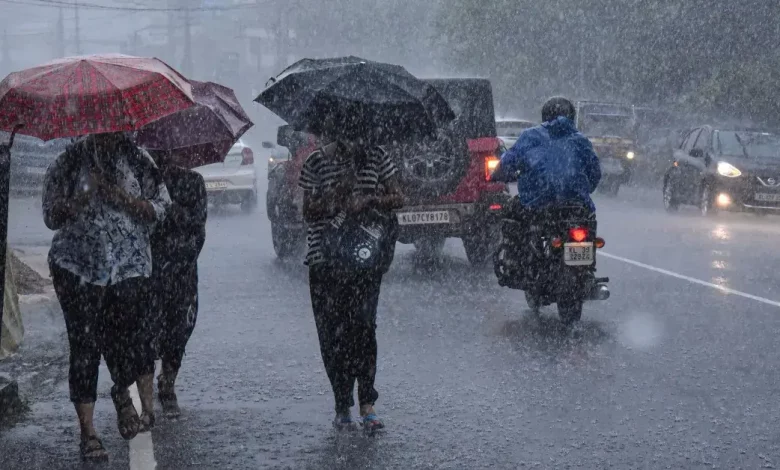Daily Current Affairs for UPSC
India’s extreme rain was restricted to a ‘corridor’ during 1901-2019
Syllabus: Physical Geography[GS Paper-1]

Context: Global warming has had an impact on the Indian monsoon, resulting in a consistent pattern of extreme rainfall events across a large area of the country since 1901.
Key points:
- The Indian monsoon, which is a complicated weather pattern, has been affected by global warming, causing changes in things like when it starts and ends and how much rain it brings.
- A new study reveals that a stretch of land from West Bengal to Gujarat and Rajasthan experiences extreme rainfall events at the same time, which goes against the belief that stationary elements in the climate are disappearing.
Effect of global warming on the Indian monsoon:
- The total amount of rainfall during seasons has decreased over the past seventy years due to global warming causing uneven heating of land and ocean.
- This has led to changes in the monsoon season, such as longer periods of dry weather, stronger periods of rain, and unpredictable heavy rainfall events, making it difficult to accurately predict the weather.
Pattern of synchronized extreme rainfall which refer to as the “highway” of rainfall:
- A recent research investigation has unearthed a fascinating stationary component within the monsoon dynamics, which can be described as a “highway” facilitating synchronized occurrences of intense rainfall.
- This pathway extends from certain regions in West Bengal and Odisha to specific areas in Gujarat and Rajasthan.
- The biggest finding is that this corridor has stayed the same from 1901 to 2019, which suggests there is potential for advancements in understanding and predicting processes.
Other key findings of the report:
- Traditional statistical methods do not fully capture the intricate connections between different rainfall centres.
- By utilising advanced network analysis with IMD’s extensive rainfall data, researchers discovered consistent patterns of active nodes along a specific route for over a hundred years.
- The distances between these nodes, which reflect the level of synchronisation, have remained relatively constant, highlighting the enduring nature of this phenomenon.
Implications of forecasting:
- These findings contradict the belief that stationary elements have disappeared from climate systems because of global warming.
- The monsoon’s ability to coordinate intense rainfall and follow a specific path indicates a distinct level of stability.
- The concentration of heavy rainfall in specific geographic areas may be caused by the presence of mountain ranges along the west coast and across Central India.
- Testing this hypothesis in models could improve forecast accuracy without the need for more detailed models or increased computational expenses.
- India has the ability to utilise its strong modelling capacity and computational resources to reduce the risks and improve forecasts for extreme rainfall events, which have significant impacts on agriculture, water, energy, transportation, and health.
Source: TH





.png)



